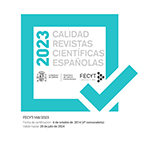La guerra santa del Russkiymir: Religión y guerra en Ucrania.
Resumen
La guerra ruso-ucraniana es el mayor conflicto militar en Europa desde la Segunda Guerra Mundial; y, aunque hunde sus raíces en el legado de la era soviética, es también la primera guerra religiosa del siglo XXI debido al uso que se ha hecho de la religión para justificarla.La Iglesia Ortodoxa Rusa, cada vez más militarizada, lleva ya tiempo ofreciendo justificaciones teológicas e ideológicas a la política nacional e internacional del régimen ruso, y ha respaldado la guerra.La politización y militarización de la religión en Rusia se debe entender en el contexto de la ideología del “Mundo ruso”, bajo la cual Rusia está destinada a liderar política y espiritualmente el mundo eslavo oriental, incluida Ucrania. Aun compartiendo el pasado soviético, Ucrania esun país históricamente multiconfesional, con un escenario religioso caracterizado por pluralismo y “denominacionalismo”. Sin embargo, la invasión rusa ha fomentado una mayor participación de la religión en la vida política en Ucrania, provocando conflictos inter e intrarreligiososque han fortalecido el papel del Estado en las relaciones interconfesionales.
Dentro del marco del análisis histórico y de discursos, y desde el punto de vista de la antropología cultural, este artículo se centra en las implicaciones religiosas de la guerra en Ucrania y en sus raíces históricas. Examinamos cómo se han transformado las narrativas religiosas en tanto en Rusia como en Ucrania, cómo se usan legitimar el uso de la violencia, y la influencia de la religión en el activismo social.
Descargas
Descarga artículo
Licencia
La revista Política y Sociedad, para fomentar el intercambio global del conocimiento, facilita el acceso sin restricciones a sus contenidos desde el momento de su publicación en la presente edición electrónica, y por eso es una revista de acceso abierto. Los originales publicados en esta revista son propiedad de la Universidad Complutense de Madrid y es obligatorio citar su procedencia en cualquier reproducción total o parcial. Todos los contenidos se distribuyen bajo una licencia de uso y distribución Creative Commons Reconocimiento 4.0 (CC BY 4.0). Esta circunstancia ha de hacerse constar expresamente de esta forma cuando sea necesario. Puede consultar la versión informativa y el texto legal de la licencia.











